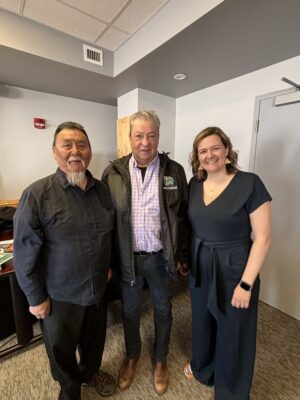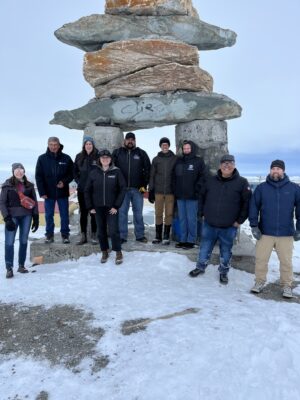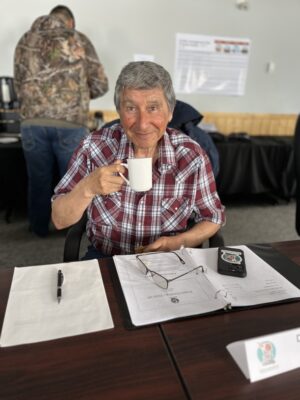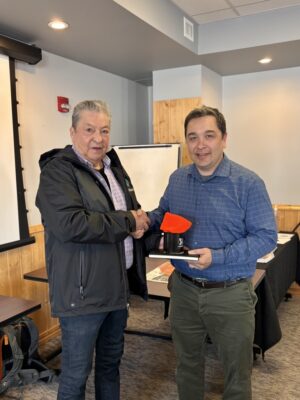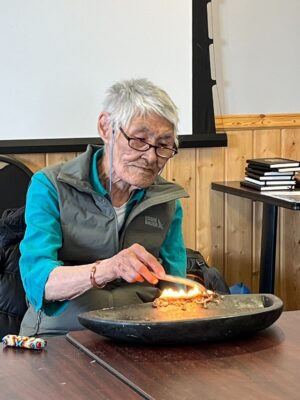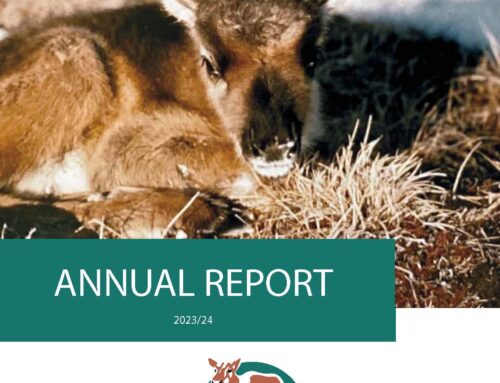Caribou Board cautiously optimistic about recent estimates
May 28, 2025 – Rankin Inlet, NU.
Board members, guests, and observers from Nunavut, northern Saskatchewan, northern Manitoba, and the Northwest Territories recently gathered in Rankin Inlet, Nunavut for the Beverly and Qamanirjuaq Caribou Management Board’s (BQCMB) 98th meeting.
The three-day gathering from May 6-8 marked 20 years since the Board’s last meeting in Rankin Inlet, and included updates and presentations from government representatives, youth, Elders, and board members.
Elder Peter Two Aulatjut opened the meeting with a ceremonial drum dance, and emphasized the importance of having all peoples at the table to discuss caribou conservation. “It’s about working together, no matter who we are. Working together is always the best way.”
Amid decades-long collaborative efforts to conserve the Beverly and Qamanirjuaq caribou herds, there is good news to celebrate: the Beverly herd has shown a statistically significant increase in its population, according to the latest figures presented at the meeting.
Biologist Mitch Campbell with the Government of Nunavut’s Department of Environment (GN-DOE) shared survey data which showed a rise in the Beverly herd’s population estimate from 103,400 in 2018 to 152,000 in 2023. Campbell noted that this bodes well for the Beverly herd, which has been in decline since the 1990s.
Though the Qamanirjuaq herd is still experiencing a slow decline, it too is showing some signs of stabilizing.
While the Board is cautiously optimistic given these encouraging signs, attendees highlighted the continued need to assess and mitigate disturbances that affect caribou, such as roadway activities and development.
“We all know that roads are detrimental to caribou,” noted BQCMB Chair Earl Evans, “but we also know they are essential – we need roads to build economies, so people can have jobs and support their families. We have to find ways to lessen the impact as best we can.”
These comments follow reports from the Government of Northwest Territories Department of Environment and Climate Change (GNWT-ECC) and the Tłı̨chǫ Government detailing significant wastage along the Tibbitt to Contwoyto Winter Road in 2025. The Tłı̨chǫ Government, among many communites, expressed their concern, and made several recommendations to minimize wastage.
Caribou parasites are another growing concern. Evans emphasized that fear of parasites can lead to unnecessary wastage. “When people see parasites, they’re reluctant to use the meat,” he said. BQCMB is working with government organizations and harvesters to ensure community members better understand parasites and disease to support the safe preparation of caribou, a critical step to minimizing waste and practicing sustainable harvests.
On the final day of the meeting, Elder Helen Iguptak lit the Qulliq – a traditional Inuit lamp that provides light and warmth to the earth, and the BQCMB urged communities and organizations to remain proactive in caribou management practices.
–
The BQCMB is a co-management advisory board that helps manage the Beverly and Qamanirjuaq caribou herds, which migrate across Manitoba, Saskatchewan, the Northwest Territories and Nunavut. The majority of board members represent Indigenous communities and all board members live in northern Canada.
For more information, contact:
Lynne Bereza
BQCMB Communications
lbereza@arctic-caribou.com
- Elder Peter Two Aulatjut at day two of the BQCMB board meeting.
- Elder Peter, Board Chair Earl Evans, and Executive Director Tina Giroux-Robillard.
- BQCMB staff and board members photograph in Rankin Inlet, Nunavut.
- Dennis Larocque, board member for communities of northern Saskatchewan, celebrates 20 years.
- Board Chair Earl Evans thanks Government of Nunavut Minister of Environment, David Joanasie.
- Elder Helen Iguptak, lights the Qulliq on the last day of meetings.


